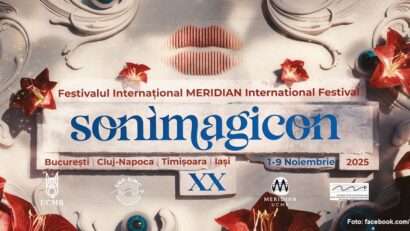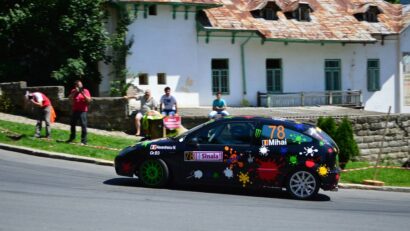The Romanian Rock Archive
With a rhythm and a style that differed from those in the West, Romanian rock-and-roll emerged in the late '60s, as both an art and an almost political manifesto

Ana-Maria Cononovici, 20.07.2021, 13:02
With a rhythm and a style that differed from those in the West, Romanian rock-and-roll emerged in the late ’60s, as both an art and an almost political manifesto. That was because, with limited access to the Western phenomenon, Romanian musicians who embraced the style had to recreate instruments, the music, and the fashion, which at the time also had political connotations.
In order to preserve the legacy of this phenomenon in Romania, a Romanian Rock Museum has been set up, and its curator, historian Cosmin Nasui, a consummate fan, told us about it enthusiastically:
“In order to be able to begin planning this rock museum, first we had our colleague, musicologist Doru Ionescu, who is on Romanian television with shows about rock in all its facets, do the documentation; he is also a publicist in this area, making musician dictionaries that have reached beyond the country’s borders. The idea comes from Doru Ionescu. He started this project by documenting this musical phenomenon by tying it to Club A and Preoteasa Club, both Bucharest clubs beloved by music loving youth, in books that he published. He also resorted to non-material patrimony, and material that he has come into contact with, he proved to us that it is necessary to take this phenomenon and put it into a museum.
Let us join our host, Cosmin Nasui, in exploring the Rock Museum:
“Putting something into a museum does not mean that it is ossified, quite the contrary, we worked on this project out of an interest in taking over these experiences in rock music in Romania, which started with the late ’60s, with various forms of evolution during the communist period, from the ’70s and ’80s, up to the period after 1989. There is an entire discussion about the invention of the rock guitar by Romanians. Because rock means electric guitar, folk means acoustic guitar, but an electric guitar could not be built during communist years in Romania. Such instruments could not be imported, so they were recreated, based on pictures, based on electrical blueprints of instruments that reached Romania in magazines. We still have access to sources, and that is why the project started upon Doru Ionescu’s initiative grew as we intensified documentation and research in all areas, and used instruments found in museum catalogs, instruments typical of this discipline, to be applied to a domain that is often ephemeral. It is a phenomenon that belongs to the audio area, the audio-video area sometimes, which left behind, in addition to fabulous tracks, legendary bands, legendary artists, many elements of material heritage, from musical instruments to outfits, letters, correspondence kept by these fabulous people. We also got sheet music, first drafts, showing the inner workings of these mechanisms for creation. We even got in the area of the cultural infrastructure during communism, based on clubs that were integrated into the Student Culture Houses, which highlight a very interesting student and youth movement, and this is the particularity of Romanian rock, being born in a student and a youth movement.
Cosmin Nasui went on to add:
“Before any physical form of the museum appears, we were interested in having an archive, being able to put together inventories. For that we needed to borrow from private collections objects that we scanned, photographed, and some of them are photographed 360 degrees, and so can be rotated on the on-line platform, they can be zoomed into, it made possible the beginning of creating a panorama of these objects. Some of them are still functional, even to use on stage, not just the studio. Others are lost to the Romanian patrimony, because a large part of Romanian musicians emigrated to various Western countries, taking with them instruments that we could never recover.
There is also an area of postcards, letters, correspondence between the artists, but also albums accessible to people with visual impairments, for instance. Cosmin Nasui told us:
“A museum does not necessarily have to look to the past, to the Stone Age or the Middle Ages, or the modern period of Romania. We believe that we have to look to a period closer to the present, because many of these bands are no longer functioning, some of these stages have disappeared, things of this sort can be lost, they have quite an amount of fragility, because even oral histories, that can be written down, or the instruments, these can disappear, making it very difficult for anyone taking on such an enterprise to recover and rediscover those things that cannot be heard in the music. The music that, of course, is center stage.
The story goes on. In the next stage, they plan to go regional, and try to discover what rock meant in various places in the country, in student centers, starting to build a network of museums, to be associated with big music events, as a sort of backstage pass.






























